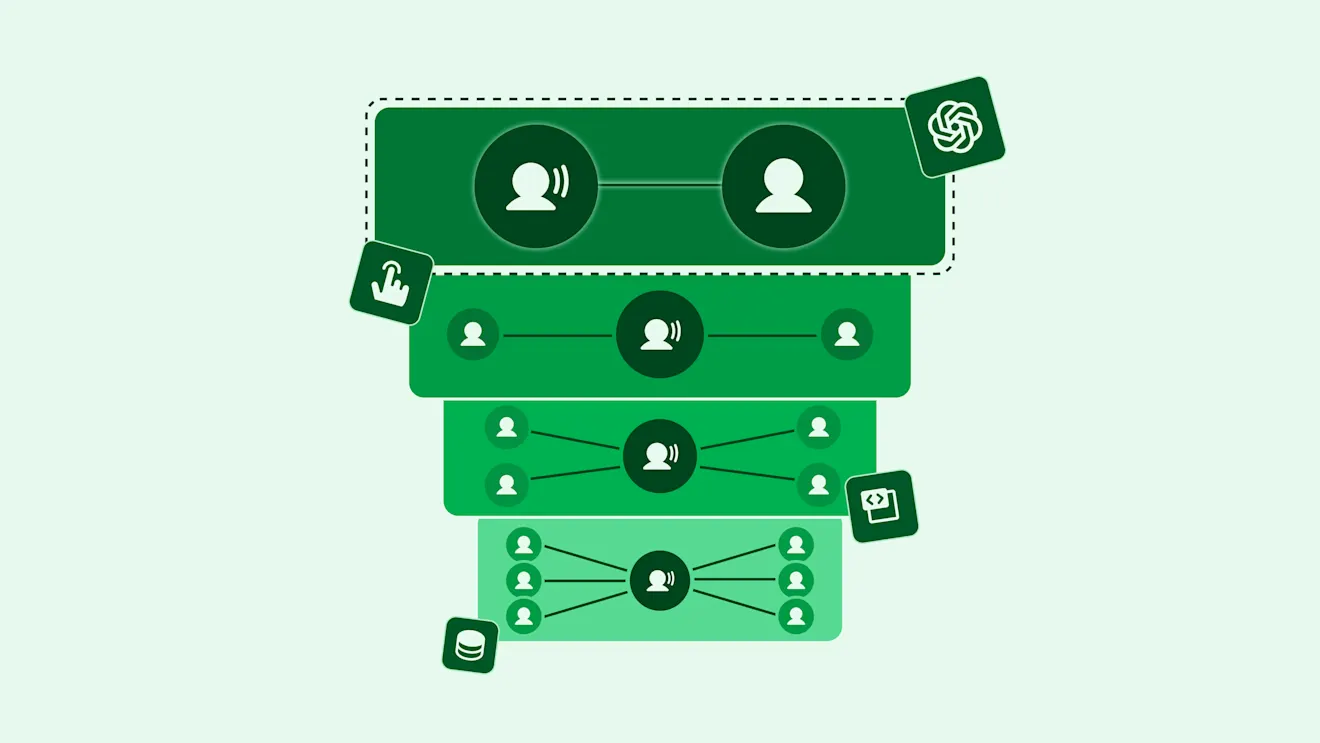Personalization maturity model: When and how should you personalize customer experience?
Updated on October 31, 2025
·Originally published on January 1, 2024

It's no secret that the customer experience is essential to digital marketing success.
Marketers know this, and they also understand that it doesn’t make sense to implement an automated, one-size-fits-all approach to the content that they show their customers. Instead, they leverage personalization to make their customers’ digital experiences unique.
That means marketing teams must make the effort to understand what customers want and need from their brands, and translate that into the digital content that they create and publish.
It’s easy to underestimate just how important personalized customer experiences are to engagement with content across digital channels. Research suggests that almost 70% of customers are more likely to purchase from brands that personalize their experiences. That’s because personalized experiences boost engagement, improving the customer's perception of the brand, increasing loyalty, making it more likely that they’ll convert and, ultimately, buy their products.
We all, more or less, understand that optimizing personalization in the service of customer experience is not only a good marketing idea but provides excellent returns. Great. But, where do you start with your personalization journey? At what point do your brand's personalization efforts start to become valuable?
To answer that question, we need to think about your personalization maturity model — and, in this post, we’re going to help you do that.
Understanding personalization maturity
If you're new to personalization, you probably have a lot of questions about how to implement an effective personalization strategy.
Should you start creating personalized experiences right away or wait until you're able to leverage data on your customers' browsing behavior? How much interaction do you need before you start personalizing your customer experience?
You also need to think about personalization technology. For example: What type of personalization software does your business need? How do you choose the right personalization tool? How do you assess the effectiveness of different personalization solutions?
The answers to those questions vary depending on a brand’s level of personalization maturity — which is, essentially, a journey from “no personalization whatsoever" to the comprehensive “hyper-personalization” of digital experiences.
Segmentation
Critical to every personalization strategy is customer segmentation — that is, using data to organize customers into groups based on certain shared characteristics such as age, location, past purchases, and so on. Brands can then use those customer segments as the foundation for tailored, personal experiences, which reflect customers’ needs and preferences and make them more likely to convert.
An effective approach to segmentation is a prerequisite for successful personalization. Accordingly, brands should prioritize the collection of high-quality data in order to facilitate their segmentation strategy.
The stages of personalization maturity
Although no two personalization strategies are exactly the same, let’s explore the different stages involved in the journey to full personalization maturity.
1. Initial Stage: One to all
In this initial stage of personalization maturity, a brand distributes a single message to every customer, and does not leverage data to change the customer journey or affect user engagement.
Customer experience can seem dynamic at this level since content and offers change regularly. However, the scope of the brand’s digital ecosystem is limited in scope, possibly to a handful of static webpages, so it's still one-size-fits-all with every customer getting the same experience.
This stage should be used for basic data collection, for example, the source of incoming traffic.
2. Segment stage: One to many
Brands that are new to personalization typically find it useful to automate as early as possible. Automation opens up opportunities for customizing the customer experience based on segmentation data such as customer location, browsing history, and purchase behavior.
Brands taking their first steps into personalization often pick just one algorithm to use in every context and constrain it with rules. Segmentation rules may include pre-defined visitor events, location, channels, and marketing campaigns.
3. Persona stage: One to some
At this stage, audience members receive personalized experiences based on defined segments and buyer personas. These personalization strategies are characterized by an expansion to more customer touchpoints, and an effort to leverage more data, such as defined behavior patterns and customer similarities, in order to appeal to individuals.
4. Micro-segmentation stage: One to few
After brands have implemented an effective personalization strategy tailored to personas, it may be useful to advance to micro-segmentation.
Micro-segmentation is a more advanced form of segmentation that groups small numbers of customers into extremely precise segments that are based on defined factors, including behavioral predictions.
5. Hyper-personalization stage: One to one
At this stage, brands seek to provide customers with unique journeys shaped by their intent, prior interactions, and data-driven customer knowledge. These unique customer experiences are driven by leveraging big data, AI-driven algorithms, and predictive models for direct targeting and hyper-contextualization.

The bottom line
Considering how important it is to customize experiences in order to stay ahead of competitors, personalization should be a priority for most marketing teams. With that in mind, regardless of your brand’s level of maturity, you can make your personalization journey easier by implementing the right personalization tools.
Whether you’re taking your first steps toward personalized digital experiences, or preparing to deploy a hyper-personalized experience across multiple touchpoints, Contentful can help you achieve your goals.
Take a look at Contentful Personalization, to learn more about personalization strategies on our platform, or chat with our sales team to take the next step on your journey.
Inspiration for your inbox
Subscribe and stay up-to-date on best practices for delivering modern digital experiences.






